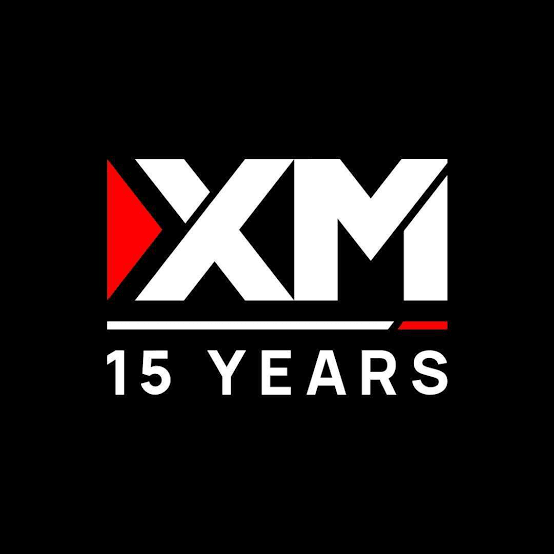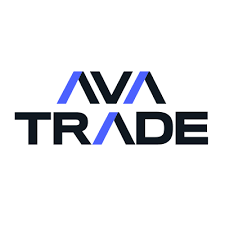Commodities Trading – Complete Educational Guide
Recommended Brokers 2025
Educational access and demo-first practice. No investment advice.
Table of Contents
- Recommended Brokers
- What Are Commodities?
- History of Commodities Trading
- Major Commodities Categories
- Commodities Markets & Exchanges
- Commodities Trading Mechanics
- Fundamental Analysis for Commodities
- Technical Analysis for Commodities
- Seasonal Patterns in Commodities
- Commodities Trading Strategies
- Risk Management in Commodities Trading
- Best Brokers for Commodities Trading
- Trading Platforms for Commodities
- Common Commodities Trading Mistakes
- Success Tips for Commodities Traders
- Frequently Asked Questions
Seasonality and Costs
Measure spread/commission and financing where applicable, and plan around known seasonal patterns and reports. Keep risk per idea small and consistent.
1. What Are Commodities?
Commodities are basic goods and materials that are widely used and have no qualitative differentiation across markets. They are the raw inputs used in the production of other goods and services. Commodities trading involves buying and selling these standardized resources, either through physical delivery or financial contracts.
The key characteristic of commodities is their fungibility - one unit of a commodity is essentially identical to another unit of the same grade and type. For example, gold of a certain purity is the same regardless of where it was mined, and crude oil of a specific grade has the same properties regardless of its origin.
Why Trade Commodities?
Commodities trading offers several advantages for traders and investors:
Advantages
- Portfolio diversification
- Inflation hedge
- High volatility opportunities
- Global market exposure
- Clear fundamental drivers
- Leverage availability
Disadvantages
- High volatility risks
- Complex fundamental factors
- Storage costs for physical commodities
- Geopolitical risks
- Weather and climate dependencies
- Regulatory changes
Commodities often have low correlation with traditional financial assets like stocks and bonds, making them excellent for portfolio diversification. During periods of inflation, commodity prices tend to rise, providing a natural hedge against the decreasing purchasing power of currency.
2. History of Commodities Trading
Commodities trading has a long and rich history dating back thousands of years. The earliest forms of commodities trading involved simple barter systems where goods were exchanged directly for other goods. As civilizations developed, standardized forms of commodities emerged, and formal markets began to take shape.
Ancient Commodities Markets
In ancient Mesopotamia around 4500 BC, clay tokens representing specific quantities of commodities like grain and livestock were used in trading. The Roman Empire established sophisticated markets for goods like grain, olive oil, and wine throughout their territories.
The Birth of Futures Trading
The modern commodities market as we know it began to take shape in 17th century Japan with the trading of rice futures. The Dojima Rice Exchange in Osaka, established in the late 1600s, is considered the world's first futures exchange.
Chicago Board of Trade
The Chicago Board of Trade (CBOT), founded in 1848, revolutionized commodities trading by standardizing grain contracts. This allowed farmers to lock in prices for future delivery, reducing their exposure to price fluctuations.
Modern Commodities Markets
The 20th century saw the expansion of commodities trading to include energy products, metals, and financial instruments. Today, commodities are traded on exchanges worldwide, with electronic trading platforms enabling 24-hour market access.
3. Major Commodities Categories
Commodities are typically categorized into four main groups: energy, metals, agriculture, and livestock. Each category has unique characteristics, drivers, and trading considerations.
Energy Commodities
Energy commodities include crude oil, natural gas, heating oil, gasoline, and ethanol. These commodities are crucial for global economic activity and are highly sensitive to geopolitical events, production decisions by major producers (like OPEC), and technological changes in energy extraction and consumption.
Key Energy Commodities:
- Crude Oil (WTI and Brent): The world's most actively traded commodity, with prices influenced by OPEC decisions, geopolitical tensions, and global economic growth.
- Natural Gas: Highly seasonal commodity with prices typically rising in winter (heating demand) and summer (cooling demand).
- Gasoline and Heating Oil: Refined products derived from crude oil, with their own supply/demand dynamics.
Metals Commodities
Metals are divided into precious metals and industrial (base) metals. Precious metals like gold and silver are often viewed as safe-haven assets, while industrial metals like copper and aluminum are closely tied to economic activity.
Key Metals Commodities:
- Gold: Traditional safe-haven asset and inflation hedge, influenced by interest rates, currency movements, and geopolitical uncertainty.
- Silver: Has both precious metal and industrial applications, making it sensitive to both investment demand and economic activity.
- Copper: Often called "Dr. Copper" for its ability to predict economic trends due to its widespread use in construction and manufacturing.
- Platinum and Palladium: Used primarily in automotive catalytic converters, with prices influenced by automotive production and emissions standards.
Agricultural Commodities
Agricultural commodities include grains, soft commodities (like coffee and sugar), and other farm products. These commodities are heavily influenced by weather patterns, growing conditions, and global demand trends.
Key Agricultural Commodities:
- Corn, Wheat, and Soybeans: Major grains with seasonal planting and harvesting cycles, influenced by weather, global demand, and biofuel policies.
- Coffee and Cocoa: Soft commodities with production concentrated in specific geographic regions, making them vulnerable to weather and political instability.
- Cotton and Lumber: Industrial agricultural products tied to textile and construction industries respectively.
Livestock Commodities
Livestock commodities include live cattle, feeder cattle, and lean hogs. These markets are influenced by feed costs, disease outbreaks, consumer preferences, and production cycles.
4. Commodities Markets & Exchanges
Commodities are traded on specialized exchanges around the world. Each exchange specializes in specific types of commodities and has its own contract specifications, trading hours, and rules.
Major Commodities Exchanges
Chicago Mercantile Exchange (CME) Group
The CME Group is the world's largest derivatives marketplace, formed by the merger of the Chicago Mercantile Exchange, Chicago Board of Trade, New York Mercantile Exchange, and COMEX. It offers trading in a wide range of commodities including grains, livestock, energy, and metals.
Intercontinental Exchange (ICE)
ICE operates global exchanges and clearing houses for financial and commodity markets. It's particularly known for its Brent crude oil futures and soft commodities like coffee, cocoa, and sugar.
London Metal Exchange (LME)
The LME is the world's largest market for industrial metals, including copper, aluminum, zinc, lead, nickel, and tin. It operates a unique ring trading system alongside electronic trading.
Tokyo Commodity Exchange (TOCOM)
TOCOM is Japan's largest commodities exchange, trading precious metals, rubber, oil, and other commodities primarily for the Asian market.
Trading Hours and Sessions
Commodities markets have specific trading hours that often include electronic trading sessions in addition to traditional floor trading. Understanding these hours is crucial for effective trading, especially when markets overlap or during key report releases.
Exchange Note: Most commodities exchanges now offer nearly 24-hour electronic trading, but liquidity and volatility vary significantly across sessions. The most active trading typically occurs during the overlap of major financial centers.
5. Commodities Trading Mechanics
Understanding how commodities trading works is essential before placing your first trade. Commodities can be traded through various instruments, each with its own characteristics and requirements.
Futures Contracts
Futures contracts are the most direct way to trade commodities. A futures contract is a standardized agreement to buy or sell a specific quantity of a commodity at a predetermined price on a specified future date.
Key Elements of Futures Contracts:
- Contract Size: The amount of the commodity represented by one contract (e.g., 1,000 barrels of crude oil).
- Tick Size: The minimum price fluctuation of the contract.
- Delivery Month: The month when the contract expires and physical delivery would occur.
- Last Trading Day: The final day the contract can be traded.
Contracts for Difference (CFDs)
CFDs are popular among retail traders as they allow speculation on commodity price movements without taking physical delivery. CFD trading typically involves lower capital requirements than futures trading.
Exchange-Traded Funds (ETFs)
Commodity ETFs provide exposure to commodities without directly trading futures contracts. Some ETFs hold physical commodities (like gold ETFs), while others use futures contracts to track commodity prices.
Options on Futures
Options give the buyer the right, but not the obligation, to buy or sell a futures contract at a specific price before a certain date. Options can be used for speculation or to hedge existing positions.
Margin Requirements
Commodities trading typically involves leverage, meaning traders can control large positions with relatively small amounts of capital. However, this also increases risk, and margin calls can occur if positions move against the trader.
Trading Mechanics Tip: Always understand the contract specifications and margin requirements before trading any commodity. Different brokers may have varying margin requirements for the same commodity.
6. Fundamental Analysis for Commodities
Fundamental analysis is crucial for commodities trading as it focuses on the underlying supply and demand factors that drive prices. Unlike stocks, where company performance matters most, commodity prices are determined by global economic forces, weather patterns, and geopolitical events.
Supply Factors
Supply analysis examines the factors affecting the production and availability of commodities:
Production Levels
Monitor production reports from major producers. For agricultural commodities, track planting intentions, crop conditions, and harvest reports. For energy, follow OPEC decisions and production data from major oil-producing countries.
Inventory Levels
Weekly inventory reports, such as the EIA petroleum status report for oil and gas, provide crucial information about supply levels. Rising inventories typically indicate oversupply and put downward pressure on prices.
Geopolitical Events
Political instability in major producing regions can disrupt supply. For example, tensions in the Middle East often affect oil prices, while labor strikes in major mining countries can impact metal prices.
Demand Factors
Demand analysis focuses on the consumption patterns and economic factors that drive commodity usage:
Economic Growth
Commodity demand is closely tied to global economic activity. Strong economic growth typically increases demand for energy, metals, and other industrial commodities.
Seasonal Patterns
Many commodities exhibit strong seasonal demand patterns. For example, natural gas demand peaks in winter (heating) and summer (cooling), while gasoline demand rises during summer driving season.
Technological Changes
Technological developments can create or destroy demand for certain commodities. The rise of electric vehicles, for instance, has increased demand for lithium, cobalt, and nickel while potentially reducing long-term oil demand.
Key Reports and Data Releases
Successful commodities traders closely monitor specific reports and data releases:
- EIA Petroleum Status Report: Weekly data on U.S. oil inventories, production, and demand.
- OPEC Monthly Oil Market Report: Comprehensive analysis of global oil markets.
- USDA Reports: Various reports on agricultural production, including WASDE (World Agricultural Supply and Demand Estimates).
- Commitment of Traders (COT) Report: Shows positions of different trader types in futures markets.
7. Technical Analysis for Commodities
While fundamental analysis provides the "why" behind price movements, technical analysis helps with the "when" and "where" of trading decisions. Commodities often exhibit strong trends and clear chart patterns that technical analysts can exploit.
Key Technical Indicators for Commodities
Moving Averages
Moving averages help identify trends and potential support/resistance levels. Commodity traders often use combinations of short-term (e.g., 20-day) and long-term (e.g., 50-day or 200-day) moving averages.
Relative Strength Index (RSI)
RSI measures the speed and change of price movements, helping identify overbought or oversold conditions. Commodities can remain in overbought or oversold territory for extended periods during strong trends.
MACD (Moving Average Convergence Divergence)
MACD is a trend-following momentum indicator that shows the relationship between two moving averages. It's useful for identifying trend changes and momentum shifts in commodity markets.
Bollinger Bands
Bollinger Bands consist of a middle band (simple moving average) with upper and lower bands that represent standard deviations. They help identify volatility and potential reversal points.
Chart Patterns in Commodities
Commodity charts often display recognizable patterns that can signal potential price movements:
- Head and Shoulders: A reversal pattern that often signals the end of a trend.
- Triangles: Continuation patterns that indicate a pause in the trend before resumption.
- Double Tops and Bottoms: Reversal patterns that occur after extended moves.
- Flags and Pennants: Short-term continuation patterns within larger trends.
Volume and Open Interest
In futures trading, volume (number of contracts traded) and open interest (number of outstanding contracts) provide valuable insights into market participation and sentiment. Rising volume and open interest during a price move typically confirm the strength of that move.
Technical Analysis Tip: Combine multiple timeframes in your analysis. Use higher timeframes (daily, weekly) to identify the primary trend and lower timeframes (hourly, 4-hour) for precise entry and exit timing.
8. Seasonal Patterns in Commodities
Seasonality is a powerful force in commodities markets. Many commodities exhibit recurring price patterns based on seasonal changes in supply, demand, or both. Understanding these patterns can provide traders with an edge.
Energy Seasonality
Crude Oil and Gasoline
Gasoline demand typically peaks during the summer driving season (Memorial Day to Labor Day in the U.S.), often supporting oil prices. Refinery maintenance seasons in spring and fall can create temporary dislocations.
Natural Gas
Natural gas exhibits the strongest seasonal pattern, with prices typically rising in late fall and winter due to heating demand, and sometimes spiking in summer due to cooling demand (air conditioning).
Agricultural Seasonality
Grains
Grain markets follow planting, growing, and harvesting cycles. Prices often rise during the growing season due to weather uncertainty and tend to decline after harvest when supplies are most abundant.
Soft Commodities
Coffee, cocoa, and sugar have specific harvest periods in their primary growing regions that influence global supply and prices throughout the year.
Metals Seasonality
Gold and Silver
Precious metals often see increased demand during certain cultural and religious festivals, particularly in India and China. The end-of-year holiday season in Western countries can also boost demand for jewelry.
Industrial Metals
Copper and other industrial metals often see stronger demand during periods of increased construction activity, which tends to be seasonal in many regions.
Seasonality Note: While seasonal patterns provide valuable context, they are not guarantees. Always consider current market fundamentals and technical factors alongside seasonal tendencies.
9. Commodities Trading Strategies
Successful commodities trading requires well-defined strategies tailored to the unique characteristics of these markets. Here are some proven approaches used by professional commodities traders.
Trend Following
This strategy involves identifying and riding established trends in commodity prices. Trend followers use technical indicators like moving averages to confirm trend direction and enter positions in the direction of the trend.
Pros
- Captures extended moves
- Works in strong trending markets
- Simple to implement
Cons
- Whipsaws in ranging markets
- Late entries and exits
- Multiple small losses
Mean Reversion
This approach assumes that prices tend to revert to their historical averages over time. Traders identify overbought or oversold conditions using indicators like RSI and trade against extreme moves.
Pros
- High win rate potential
- Works in ranging markets
- Clear risk parameters
Cons
- Large losses if trend continues
- Requires precise timing
- Can miss extended trends
Breakout Trading
Breakout traders identify key support and resistance levels and enter positions when prices break through these levels with conviction, anticipating the start of a new trend.
Pros
- Captures early trend moves
- Clear entry signals
- Favorable risk-reward ratios
Cons
- Many false breakouts
- Requires quick execution
- Stop runs common
Spread Trading
Spread traders take simultaneous long and short positions in related commodities or different contract months of the same commodity, aiming to profit from changes in the price relationship.
Pros
- Reduced market risk
- Works in various market conditions
- Lower margin requirements
Cons
- Complex position management
- Lower profit potential per trade
- Requires deep market knowledge
News-Based Trading
This strategy involves trading around scheduled economic reports and news events that are known to move commodity prices, such as inventory reports, OPEC meetings, or USDA announcements.
Pros
- Predictable event timing
- High volatility opportunities
- Clear catalysts for moves
Cons
- Extremely high risk
- Slippage common
- Unpredictable outcomes
Seasonal Trading
Seasonal traders base their decisions on historical price patterns that recur at certain times of the year, entering positions in anticipation of these seasonal moves.
Pros
- Based on recurring patterns
- Clear entry/exit timing
- Fundamentally justified
Cons
- Patterns don't always repeat
- Early or late seasonality
- Requires multi-year analysis
Developing Your Trading Plan
Regardless of which strategy you choose, a comprehensive trading plan is essential for success. Your trading plan should include:
- Market Selection: Which commodities you will trade
- Timeframe: Your preferred holding period and chart timeframe
- Entry Rules: Specific conditions for entering trades
- Exit Rules: Profit targets and stop-loss criteria
- Position Sizing: How much capital to risk per trade
- Risk Management: Maximum daily/weekly loss limits
10. Risk Management in Commodities Trading
Commodities markets are known for their volatility, making risk management arguably the most important aspect of successful trading. Proper risk management protects your capital during inevitable losing streaks and prevents catastrophic losses.
Position Sizing
Determine your position size based on a fixed percentage of your trading capital. Most professional traders risk between 1% and 2% of their account per trade. This means that even a string of losses won't significantly damage your capital.
Stop-Loss Orders
Always use stop-loss orders to limit potential losses. Your stop-loss should be placed at a level that invalidates your trade thesis. Consider volatility when setting stops – commodities with higher volatility typically require wider stops.
Diversification
Diversify across different commodity sectors (energy, metals, agriculture) to reduce correlation risk. However, avoid over-diversification, which can dilute performance and make position monitoring difficult.
Leverage Management
While leverage can amplify returns, it also increases risk. Use leverage cautiously and understand that high leverage combined with commodity volatility can lead to rapid losses.
Correlation Awareness
Understand how different commodities correlate with each other and with other asset classes. For example, oil and natural gas often move together, while gold may move inversely to the U.S. dollar.
Risk-Reward Ratios
Aim for trades with favorable risk-reward ratios. Many successful traders look for opportunities where the potential profit is at least twice the potential loss (2:1 ratio or better).
Risk Management Formula: Position Size = (Account Balance × Risk Percentage) / (Entry Price - Stop Loss Price) = Number of Contracts/Units
11. Best Brokers for Commodities Trading
Choosing the right broker is crucial for commodities trading success. The ideal broker offers competitive pricing, reliable platforms, access to the markets you want to trade, and strong customer support.
| Broker | Minimum Spread | Commission | Platforms | Leverage | Rating |
|---|---|---|---|---|---|
| Deriv | 0.0 pips | Variable | MT5, DTrader | Up to 1:1000 | 9.2/10 |
| HFM | 0.1 pips | $3 per lot | MT4, MT5 | Up to 1:1000 | 8.9/10 |
| Exness | 0.0 pips | Zero on cent accounts | MT4, MT5 | Up to 1:Unlimited | 9.0/10 |
| XM | 0.6 pips | None | MT4, MT5 | Up to 1:888 | 8.7/10 |
| AvaTrade | 0.9 pips | None | MT4, MT5, AvaTradeGO | Up to 1:400 | 8.5/10 |
| IC Markets | 0.0 pips | $3.5 per lot | MT4, MT5, cTrader | Up to 1:500 | 9.1/10 |
| Pepperstone | 0.0 pips | $3.5 per lot | MT4, MT5, cTrader | Up to 1:500 | 9.0/10 |
Key Broker Features for Commodities Trading
Competitive Spreads and Commissions
Since commodities trading often involves frequent position adjustments, low transaction costs are essential for profitability.
Reliable Execution
Fast, reliable order execution is crucial, especially during volatile market conditions or around news events.
Range of Commodities
Ensure your broker offers access to the specific commodities you want to trade, including both major and niche markets.
Advanced Order Types
Look for brokers that offer advanced order types like OCO (One-Cancels-Other), trailing stops, and conditional orders.
Educational Resources
Good brokers provide educational materials, market analysis, and trading tools to help you make informed decisions.
Broker Selection Tip: Always test a broker with a demo account before depositing real money. Pay attention to execution speed, platform stability, and the quality of customer support.
12. Trading Platforms for Commodities
The trading platform is your primary tool for analyzing markets and executing trades. Choosing the right platform can significantly impact your trading performance and experience.
MetaTrader 4/5 (MT4/MT5)
MT4 and MT5 are the most popular platforms among retail commodities traders. They offer:
- Advanced charting capabilities
- Wide range of technical indicators
- Automated trading through Expert Advisors (EAs)
- Customizable interface
- Mobile trading apps
cTrader
cTrader is known for its clean interface and advanced trading features:
- Level II pricing data
- Advanced order types
- Detachable charts
- cBots for automation
- Fast execution
NinjaTrader
Popular among advanced futures traders, NinjaTrader offers:
- Advanced charting and analysis
- Market analyzer for scanning
- Strategy builder for automated trading
- Simulated trading environment
Thinkorswim (TD Ameritrade)
This powerful platform is favored by active traders:
- Advanced charting and analysis tools
- Paper trading capability
- Customizable workspace
- ThinkScript for strategy development
Platform Selection Criteria
When choosing a trading platform, consider:
- Ease of Use: Is the interface intuitive?
- Charting Capabilities: Does it offer the technical tools you need?
- Order Execution: How fast and reliable is order processing?
- Automation: Can you automate your strategies?
- Mobile Access: Is there a functional mobile app?
- Cost: Are there platform fees or data fees?
13. Common Commodities Trading Mistakes
Avoiding common mistakes is as important as implementing successful strategies. Here are the most frequent errors made by commodities traders:
Overtrading
Taking too many trades, especially during slow market conditions, leads to increased transaction costs and lower-quality setups.
Ignoring Fundamentals
Relying solely on technical analysis while ignoring fundamental supply/demand factors can lead to poor timing or missed opportunities.
Poor Risk Management
Failing to use proper position sizing, stop-losses, or diversification can lead to catastrophic losses from just a few bad trades.
Trading Without a Plan
Entering trades without a clear strategy, including specific entry/exit rules and risk parameters, is essentially gambling.
Chasing the Market
Entering trades after significant moves have already occurred often results in buying at highs or selling at lows.
Revenge Trading
Trying to immediately recover losses often leads to emotional decisions and further losses.
Ignoring Seasonality
Failing to account for seasonal patterns can mean missing profitable opportunities or taking positions at the wrong time.
Lack of Patience
Commodities markets can experience extended periods of low volatility or consolidation. Impatience during these periods can lead to forced trades with poor risk-reward ratios.
14. Success Tips for Commodities Traders
These advanced tips can help improve your commodities trading performance and consistency:
Specialize in Specific Commodities
Rather than trying to trade everything, focus on a few commodities that you understand well. Deep knowledge of specific markets leads to better trading decisions.
Develop a Trading Routine
Create a daily routine that includes market analysis, trade planning, position monitoring, and performance review. Consistency in your approach leads to consistency in results.
Keep a Detailed Trading Journal
Document every trade with entry/exit reasons, emotions, and outcomes. Regular review helps identify patterns in your performance and areas for improvement.
Stay Informed About Global Events
Commodities are global markets influenced by geopolitical events, economic data, and weather patterns worldwide. Stay informed about developments that could impact your trades.
Manage Your Emotions
Commodities trading can be emotionally challenging due to high volatility. Develop techniques to manage fear, greed, and frustration, and never let emotions override your trading plan.
Continuously Educate Yourself
Markets evolve, and successful traders adapt. Stay current with new strategies, tools, and market developments through books, courses, and industry publications.
Start Small and Scale Up
Begin with smaller position sizes until you achieve consistent profitability. Gradually increase size as your confidence and performance grow.
Understand Your Edge
Identify what gives you an advantage in the markets – whether it's specialized knowledge, a unique strategy, or superior risk management – and focus on exploiting that edge.
Success Mindset: View trading as a business, not gambling. Approach it with professionalism, discipline, and continuous improvement. Focus on process over outcomes, and the results will follow.
15. Frequently Asked Questions
How much money do I need to start trading commodities?
The amount needed varies by market and broker. For futures trading, you typically need at least $5,000-$10,000 for proper position sizing and risk management. For CFD trading, some brokers allow accounts with as little as $100, but $1,000-$2,000 is more realistic.
What is the difference between spot prices and futures prices?
The spot price is the current market price for immediate delivery of a commodity. The futures price is the agreed-upon price for delivery at a specified future date. The difference between them is called the basis.
Do I need to take physical delivery when trading commodities?
No, most retail traders close their positions before the delivery date to avoid physical delivery. If you're trading futures, ensure you understand the contract specifications and roll over or close positions before first notice day.
What are the most volatile commodities?
Natural gas, crude oil, and some agricultural commodities (like coffee and cocoa) tend to be among the most volatile. However, volatility can change based on market conditions and specific events.
How do I stay updated on commodities markets?
Follow relevant news sources, subscribe to industry publications, monitor key reports (like EIA and USDA reports), and use economic calendars to track important data releases.
Can I trade commodities part-time?
Yes, many successful commodities traders trade part-time. Focus on markets that are active during your available trading hours, and consider longer-term strategies that don't require constant monitoring.
What is contango and backwardation?
Contango occurs when futures prices are higher than spot prices, typically when storage costs are significant. Backwardation occurs when futures prices are lower than spot prices, often indicating supply shortages.
How do interest rates affect commodity prices?
Higher interest rates typically strengthen the currency (especially USD for dollar-denominated commodities) and increase storage costs, which can put downward pressure on commodity prices. However, the relationship is complex and varies by commodity.




